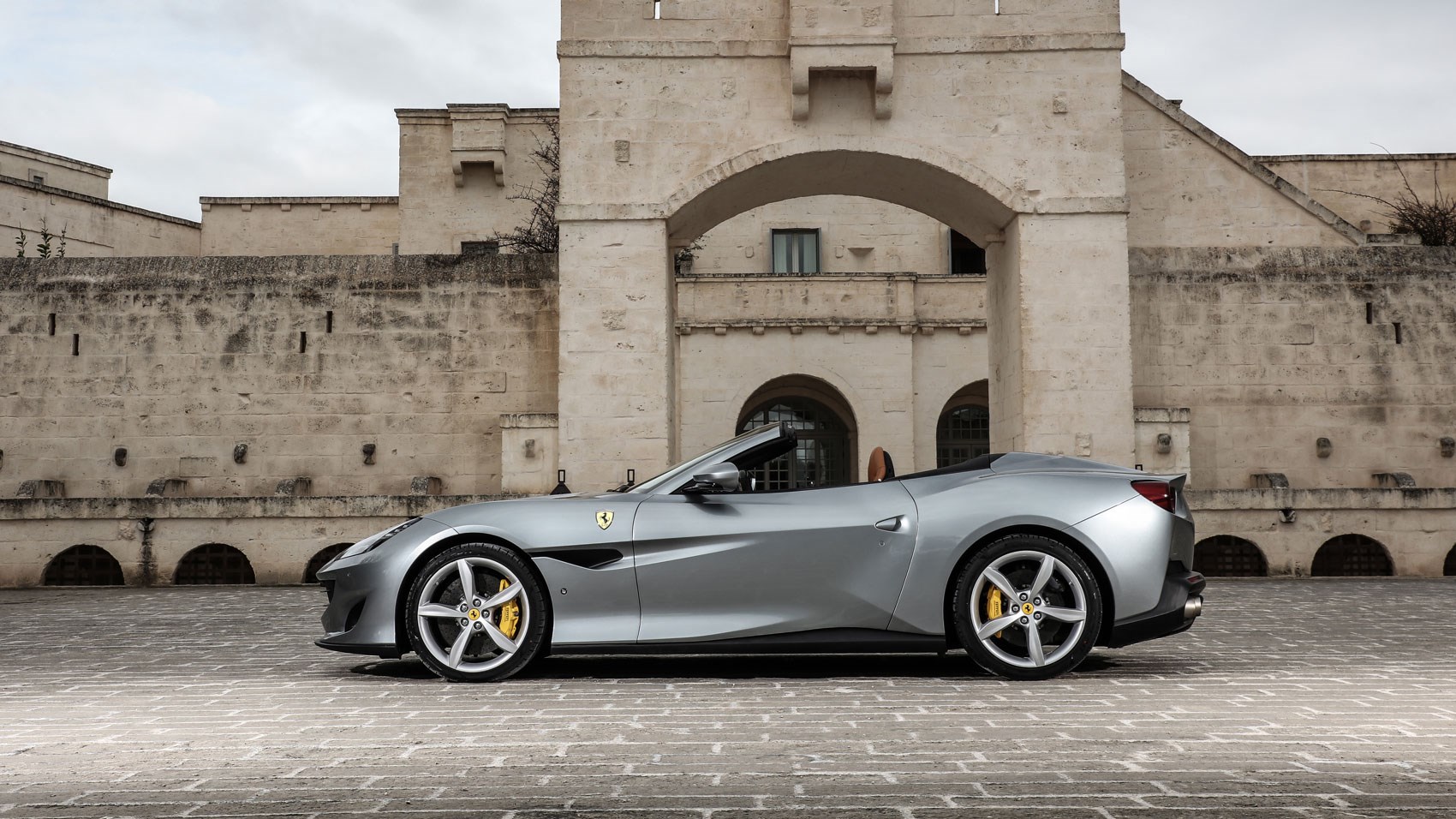► Ferrari Portofino driven
► Successor to Cali T
► Yours from £166k
The Portofino is Ferrari’s replacement for the California T. Like its predecessor, the Portofino marks the entry point to the Ferrari range – this time at £166,180, an £11k increase – and remains a front-engined, two-plus-two-seat convertible with a folding hardtop. But despite being identical in concept, there are some big changes beneath the thoroughly redesigned skin, including a new bodyshell, and the entire folding hardtop, including its mechanism.
Most striking at a standstill is the design. Far more aggressive and F12-like than the softer, more approachable California, it suggests this is an altogether more serious driving machine.
That’s no coincidence – Ferrari has focussed on making the Portofino more exciting to drive, while being even more useable and comfortable for the typically new customers that a folding hardtop attracts to the Prancing Horse. First owners will take delivery in July 2018.
Does the California T engine carry over here?
Essentially, yes. It’s still the 3855cc twin-turbo V8 that’s closely related to the slightly larger unit in the 488. Key improvements over the California T include new pistons and con-rods, a new variable displacement oil pump to reduce hydraulic power losses by 30%, a single-piece cast turbo manifold, a new intercooler to boost performance and a new exhaust with reduced back pressure.
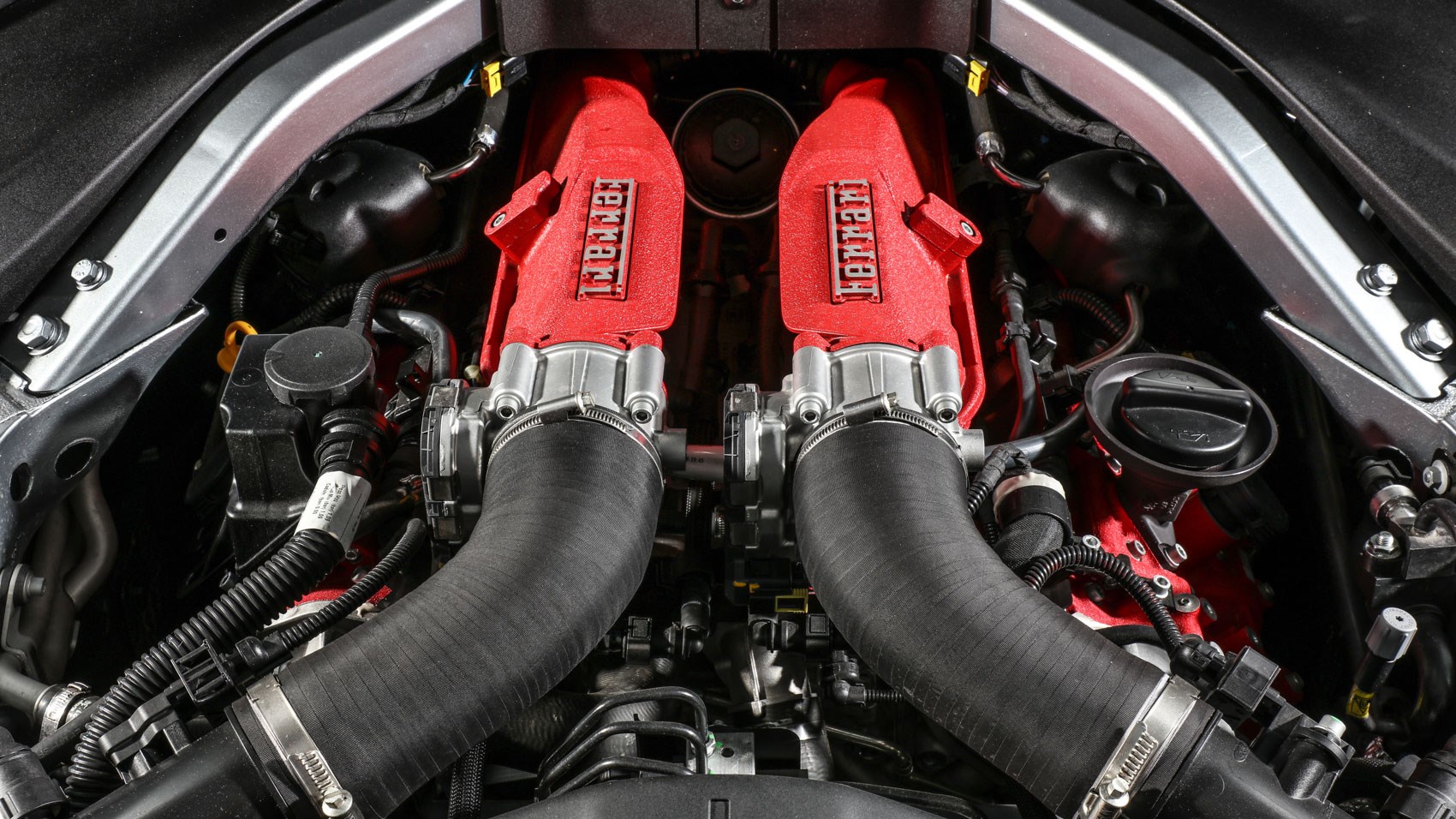
As a result, the V8 now delivers 592bhp and 561lb ft, up 40bhp/4lb ft on the California T, while efficiency increases from 24.1mpg/273g/km to 26.4mpg/245g/km. Power still feeds through a seven-speed dual-clutch gearbox to the rear wheels, but there’s a helping hand from a third evolution of Ferrari’s electronically controlled E-diff, and adaptive suspension that talks to a new ESP calibration. All combined, the Portofino now does the 0-124mph sprint in a claimed 10.8sec, 0.4sec faster than its predecessor.
Ferrari has targeted incremental weight savings throughout the Portofino, with that detail extending right down to shorter welds, so the Portofino is 80kg lighter than the Ferrari California. Insiders point out that the reduction in weight and increase in power is comparable to the shift from a 458 Italia to the far more hardcore 458 Speciale.
Can you operate the folding hardtop while driving?
At last, yes – California drivers had to pull to a stop to raise or lower the roof. The new roof – new skin, new mechanism remember – takes the same 14 seconds to open or close, but can now do so at up to 25mph. The mechanism is impressively quiet in its operation, but there are a few clunks as the panels lock into place, especially on closing. But, really, it’s very good.
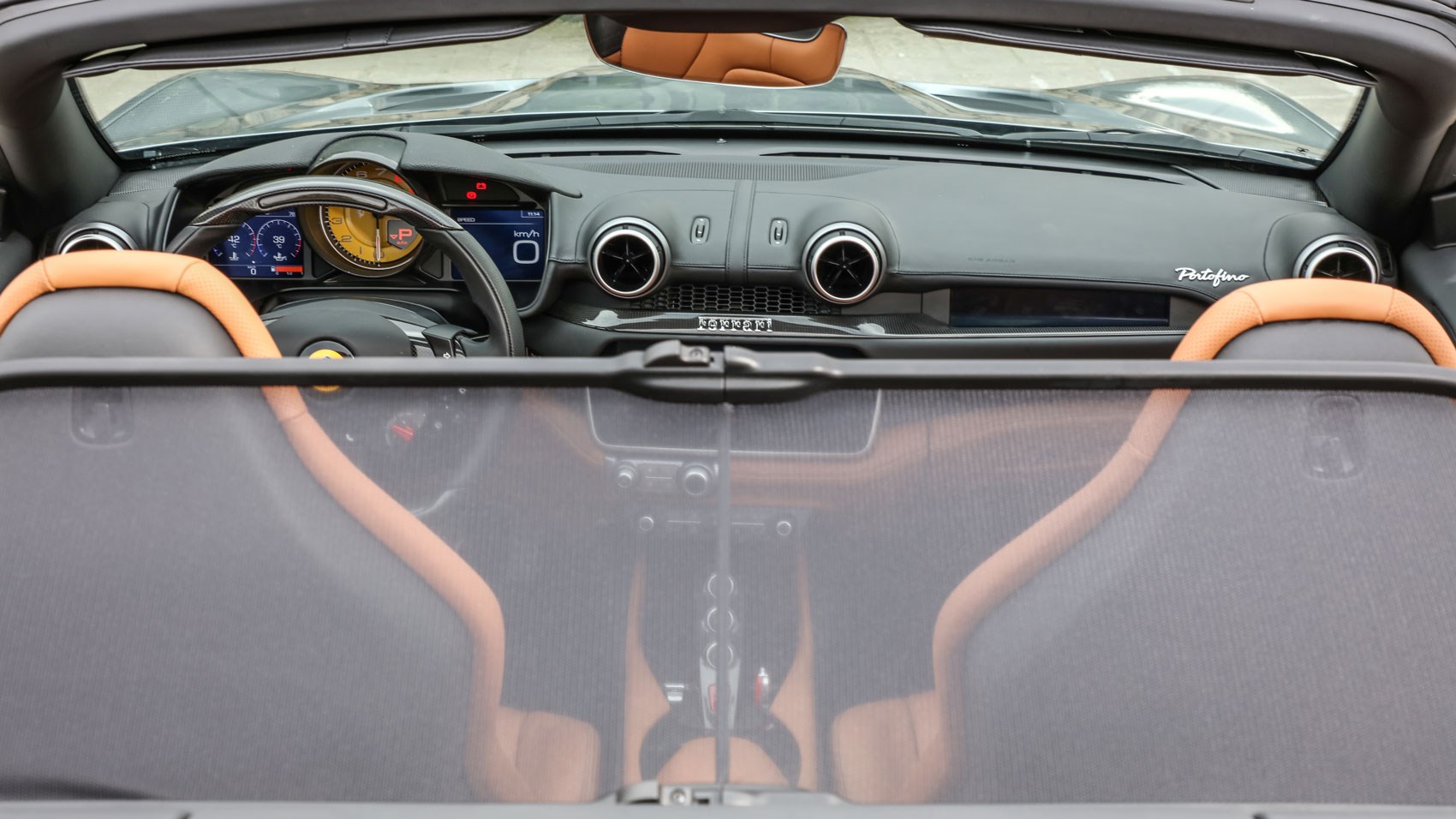
You’re more aware of road noise from the rear 20-inch tyres than wind noise with the roof up, but even then you’ll appreciate the coupe-like refinement at higher speeds. It makes the weight and bulk of the folding hardtop almost worth it, because this is a bulky chunk of metal to put in your boot, as the still-quite-high bootline attests. Still, a claimed 292 litres of boot space is up 52 litres on the California T.
What’s it like inside?
Again it’s a big improvement. The wheelbase is the same at 2670mm, but the seats are all-new and built around slimline magnesium frames. They can drop you right down on the deck in max racing driver mode, and the 18-way items we tested electrically adjusted to squeeze and support where required. They also help unlock a claimed extra 50mm of legroom for occupants in the Isofix-compatible rear seats.
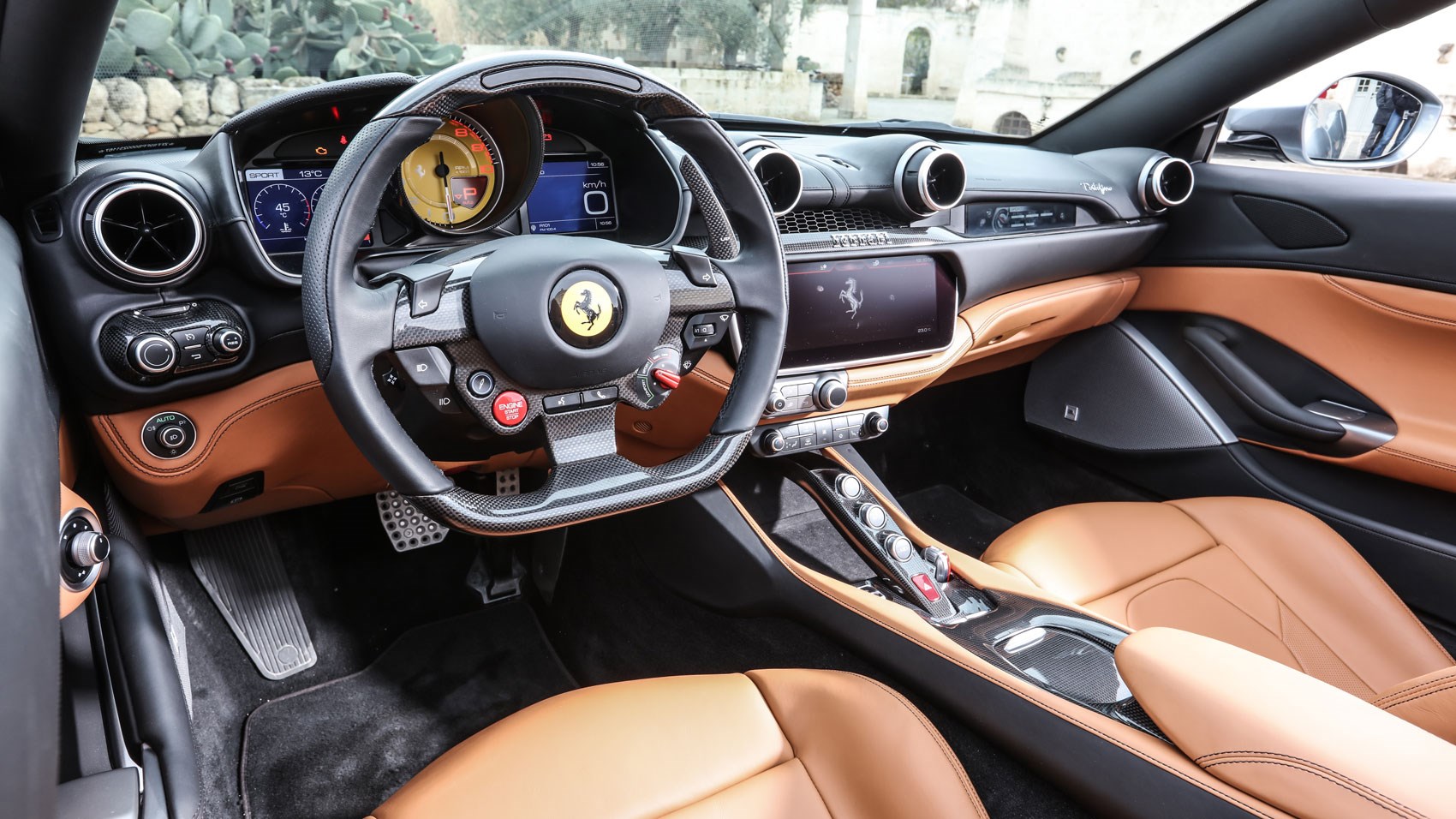
There’s a new leather steering wheel to frame the central rev counter, a new air-con system, but – more crucially – a new 10.25-inch touchscreen infotainment system too. Those ruthless Germans still do it better, but it now feels a better fit with the six-figure price tag.
It’s not all good news – the air-con controls are flimsy, the graphics in the instrument binnacle look a little dated, and you’re still not exactly overwhelmed by the standard equipment – but overall this is a good quality interior, with a suitably special feeling design.
How does the Portofino drive?
Throttle response is incredibly sparky, to the point of edginess at part throttle, but it does give the Portofino a likeably hungry impatience. Turbo lag is well disguised too, to the point where you only really know this is a turbo motor because of the thumping mid-range urge – and this is a genuinely rapid machine – not because of the sizeable pause before the punch. But where this engine really scores over its predecessor is how full-bodied it feels at higher revs.
The California T would rev to 8000rpm but it felt like it did so reluctantly, where the Portofino feels and sounds rich and hungry when you chase the redline, encouraging you to do so. For such a luxury-focussed machine, the bassy exhaust growl on start-up and at lower revs is perhaps surprisingly extrovert, but there’s no doubt it adds a sense of drama.
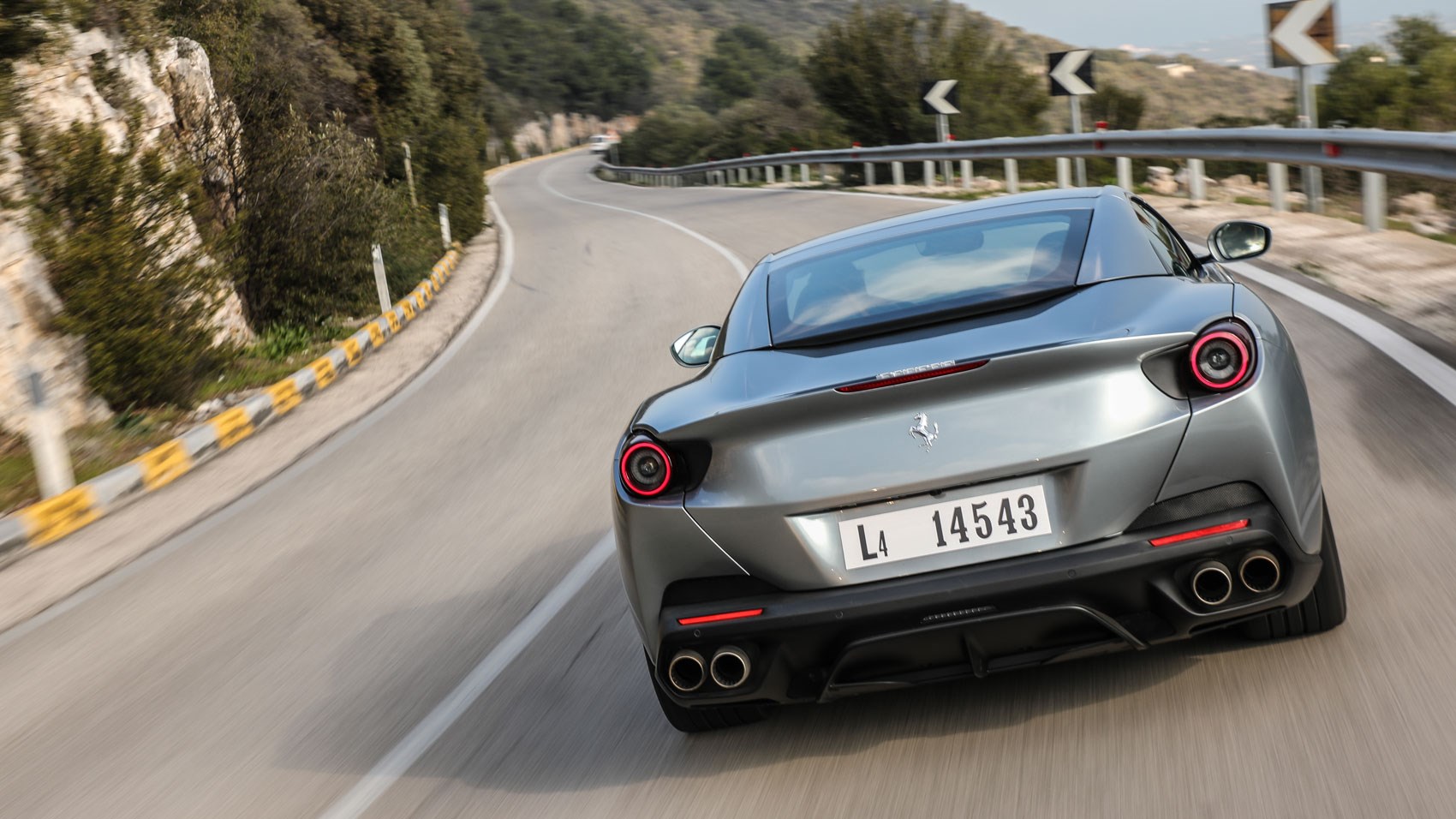
The seven-speed dual-clutch gearbox is typical Ferrari brilliance, slipping smoothly between ratios on moderate throttle, but punching in shifts more like you’re pulling a trigger than a paddleshift when you’re flat out. Downshifts are particularly impressive, engaging with real crispness as the revs flick up instantly, and underlining just how keen this engine is to rev.
What about the chassis?
It’s worth noting that we tested the Portofino on some pretty rough roads in southern Italy. Considering the poor state of the Tarmac, the suspension coped very well, and rounded off the worst of the bumps – especially in the essential ‘bumpy road’ mode – while still feeling firm and focussed enough to impart a sporty feeling.
A low-frequency jiggle remained throughout the structure, though, so while it’s far from poor, I found myself craving extra torsional stiffness – though Ferrari claims a 35% increase in stiffness over the California T. It’ll be interesting to see how it fares on smoother surfaces.
The Portofino is the second Ferrari after the 812 Superfast to get electric power steering. The lightness of the new system immediately makes the Portofino feel nimble and responsive, without being as hyperactively responsive as other Ferrari systems. The engineers have managed to dial in some road feel and a well-judged increase in weight to convey the increasing load on the chassis.
Drive at a moderate lick down a good road and the Portofino turns in promptly, carves through quick corners deftly, puts its power down well – though provides plenty of opportunity to paint black lines down the road when you provoke it – plus it stops smartly thanks to standard-fit carbon-ceramic brakes, and genuinely thrills with its ferocious speed and incisive gear shifts. Arguably, this is all the Portofino needs to do to satisfy its target audience.
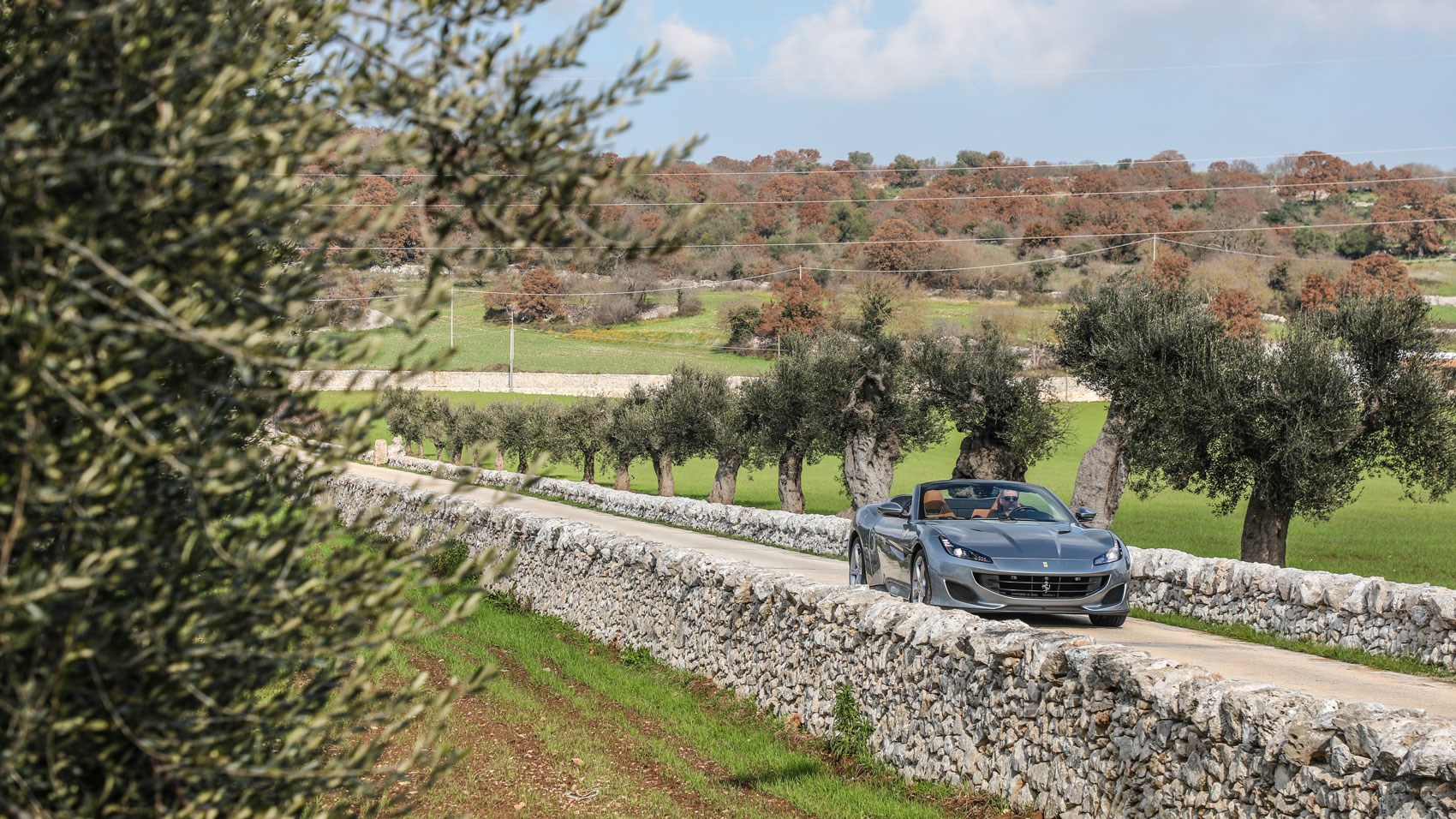
But when you really light the blue touchpaper, the Portofino starts to unravel. The front pushes into understeer a little too readily, and the rear end feels lacking in stiffness, both in terms of the suspension springs and the rigidity of the body structure. It loses its composure just when keener drivers will really want it.
Despite behaving almost impeccably, the electric power steering demonstrated just how difficult these systems can be to get right– with the car loaded and on opposite lock through one reasonably quick corner, its weighting suddenly increased in a unnatural way.
There’s no doubt the Portofino will entertain and satisfy even quite exuberant owners, but similarly it lacks the togetherness of Ferrari’s best products when really pushed, and would probably feel pretty terrible around a track.
Will the typical Portofino owner ever push the car so hard? Probably not.
Verdict
The Portofino represents a solid improvement over its predecessor, the California T, particularly when it comes to the driving experience.
The engine in particular is much more inspiring – and closer in spirit to the similar 488’s – than the rather strained-sounding unit in the California T, even taking the very worthwhile boost in performance out of the equation. It’s also sharper and more together dynamically, making this a much more enjoyable car to drive hard down a challenging road, and we’d say it’s more aggressive design makes it more covetable too.
That it does all this while offering more of the daily-driving practicality – larger boot, extra rear legroom, better infotainment, improved efficiency, a new roof that operates on the move – that owners value so much in this segment means these improvements come without drawback.
The Portofino still lacks ultimate focus when it comes to driving at ten tenths, but for the target audience we suspect the Portofino strikes a pretty sweet balance.
Check out our Ferrari reviews here
